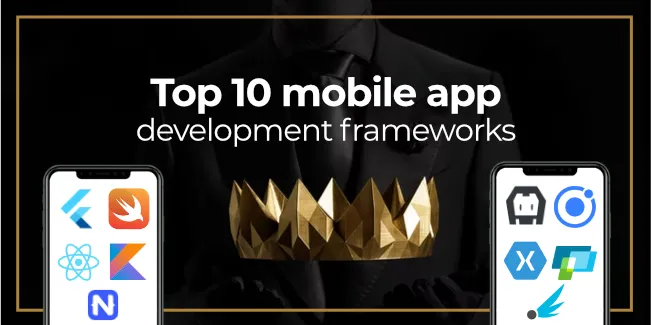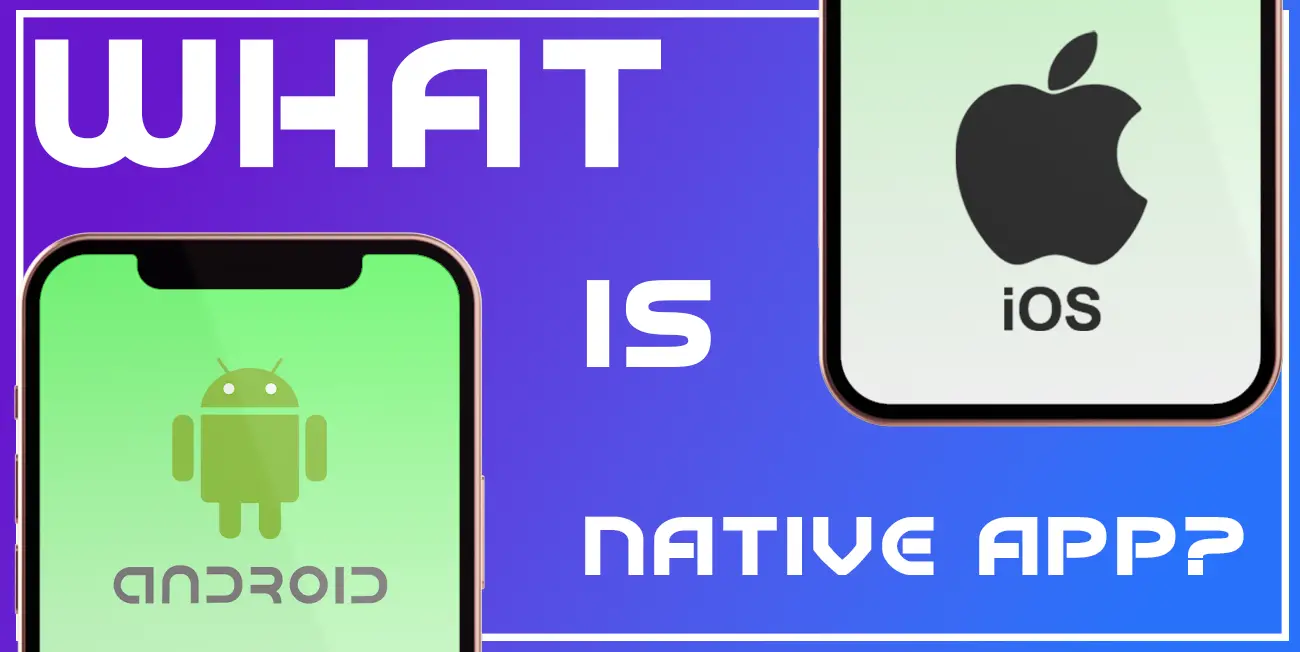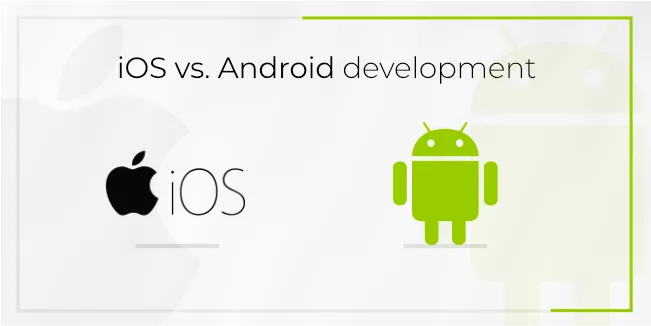Mobile applications are basically a standard for all of us. If we want to order a taxi, we use the Uber application. Do you need to rent a room in a foreign city for low money? You fire up the Airbnb application. Have you met someone and want to stay in touch with them? You add it on the Facebook mobile app.
As a business owner, you should know that if you want to stay ahead of your competition, you should build your own mobile application. This is because your potential customers are used to the fact that every company or service has its own application. In addition, the mobile app can be another point of contact with your company. However, how to develop a mobile application without spending a lot of time and money on it?
This is where mobile app development frameworks come in handy.
In this article, we will explain exactly what such a mobile app development framework is, what types it has, what a good framework should have, and what we think are the best available frameworks.
What are the mobile app development frameworks?

Let’s start with what the framework is in general. Simply put, it is a set of tools on which developers can build their system or application. It provides pre-built components or element libraries that can be used by developers to speed up the entire development process. In addition, most frameworks make the work of developers easier because they can check the status of the code or show changes in the application regularly.
There are web app development frameworks and mobile app development frameworks. In this article, we focus on the mobile ones, but it is worth just mentioning the characteristics of web frameworks.
Web frameworks are divided into two groups – frontend and backend ones. Frontend frameworks are responsible for building the entire layer visible to the user, with which they can interact. On the other hand, backend frameworks are used to build all logic structure of an app that is invisible to the user.
On the other hand, mobile app frameworks allow for the construction of both the layer visible and invisible to the user within one solution.
Check our “11 DIFFERENT TYPES OF SOFTWARE DEVELOPMENT” article to learn more!
Now let’s take a look at what types of mobile app frameworks are on the market.
Types of mobile app development frameworks
There are really many types of frameworks for building mobile apps on the market. We have selected the four most popular types, the description of which can be found below.
Low/No Code Frameworks

Low/No code frameworks help you develop an app without a single line of code. The idea behind them is that you don’t need to know how to code to create an app. You just need to connect the necessary blocks, and the app will automatically generate. Such solutions usually have a visual interface and require no coding skills whatsoever.
The main advantage of these frameworks is that they are really easy to use and don’t require any specific knowledge or skills. However, their functionality is quite limited, and you won’t be able to create anything beyond a simple app with basic features.
Native mobile frameworks
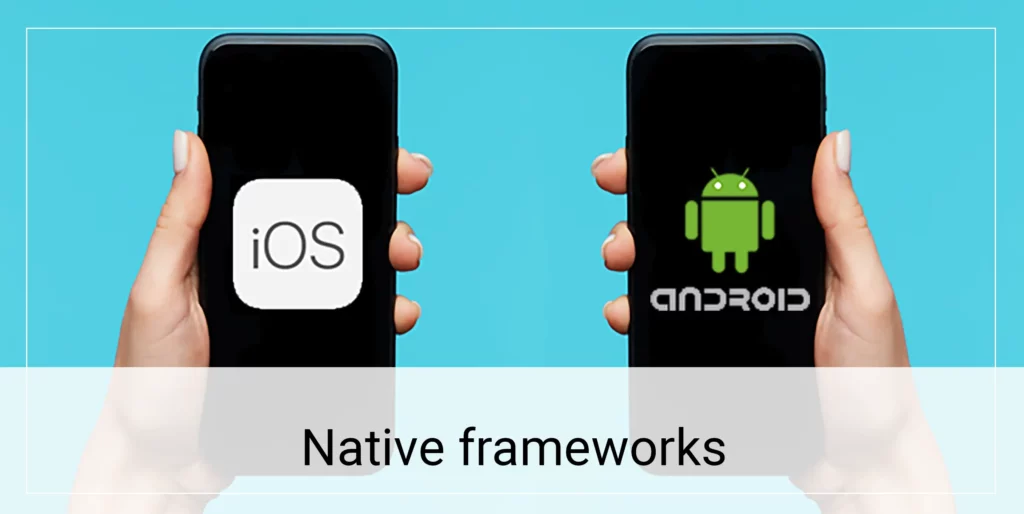
Native mobile frameworks, on the other hand, require you to have some coding skills and knowledge of the specific programming language. However, they offer a much wider range of features and possibilities.
With a native mobile framework, you can create anything from a simple app to a complex enterprise solution. Such frameworks were designed with one platform in mind, meaning that when choosing a native mobile framework, you must choose whether your native app should work on Android or iOS.
Cross-platform mobile frameworks
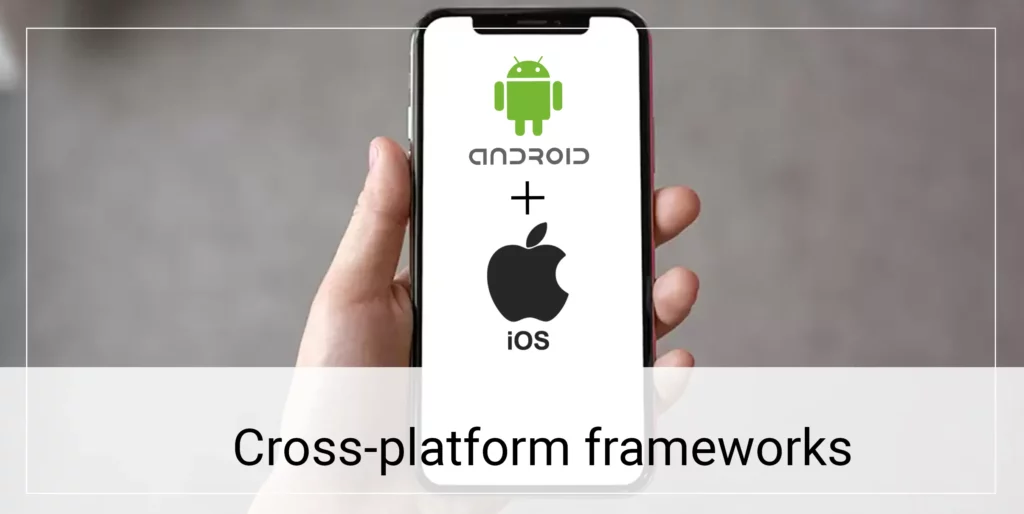
Cross-platform mobile frameworks are a compromise between native and web-based frameworks. They allow you to develop mobile apps that work on both Android and iOS, but they come with certain trade-offs. The biggest advantage of cross-platform mobile frameworks is that you can reach a wider audience with your app.
However, cross-platform mobile frameworks are not as flexible as native frameworks and often require more code to achieve the same result as native apps. It is also worth mentioning that with a cross-platform mobile framework, you can create both Android and iOS apps with one code base!
Code Generators

Code generators are mobile development tool that allows you to create an app without writing any code. Code generators take a set of existing codes and then generate new ones based on that. For example, Appy Pie is a popular app development platform that allows you to create an app without writing any code.
All you need to do is select the template for your app, add your content, and then the platform will generate the code for you.
Characteristics of a good mobile app development framework
The software development market is just flooded with frameworks. When building a mobile application, developers often choose solutions they know and feel good about. This is understandable but not always good for the project.
Each framework has its advantages and disadvantages, and at this point, we have gathered the most important aspects that a framework should have to become the basis of your success.
Documentation

The documentation is the first place to look for answers to your questions. It should be clear, concise, and easy to follow.
Community

The community is the second most important factor. A good framework will have an active community of developers who are willing to help you with your questions and problems.
Ease of use

A good mobile app development framework should be easy to use and understand. You should not have to spend days or weeks learning how to use it. The learning curve should be as short as possible so that you can get started quickly and easily.
Flexibility and Scalability

When choosing a framework, you should always consider its flexibility and scalability. The framework should be able to meet the future needs of your app as it grows. It should also be able to handle different types of devices and screen sizes.
Performance

A good mobile app development framework should offer high performance. This means that your app should be able to run smoothly on different devices and operating systems. The framework should also provide you with the tools and features you need to create a high-quality app.
Fit for the project

It is perhaps the most important point. The framework of your choice can have all the above-mentioned characteristics, but it could become a real burden if it does not fit the project at hand. First, consider what you need for your project – will it be native or cross-platform? Will it need integrations with third-party software? Will it have to connect to native APIs? Etc. And only when all questions are answered, pick your framework according to your real needs.
There are many other factors that you need to consider when choosing a mobile app development framework. However, these are the six most important ones. If you keep these factors in mind, you will be able to choose the best framework for your project.
Speaking of which, let’s take a look at the list of the best mobile app development frameworks available on the market according to Saunders Technology!
Best mobile app development frameworks in 2022
React Native

React Native is a JavaScript-based framework that is popular for developing cross-platform mobile apps. It was created by Facebook and is used by some of the biggest companies in the world.
One of the biggest advantages of React Native is that it allows mobile app developers to reuse code across different platforms. This means that developers can write code once and deploy it on both iOS and Android mobile devices.
Another advantage of React Native is that it offers a high degree of flexibility. Developers can choose to use either JavaScript or TypeScript for development. In addition, they can also use any other language that can be transpired to JavaScript, such as Dart or ClojureScript. Learn the difference between React Native and ReactJS!
Features of React Native
- Many complex third-party component libraries
- Reusable components
- Hot-reloading
- Third-party plugins
Companies that took advantage of React Native
- Microsoft Teams
- Discord
Swift
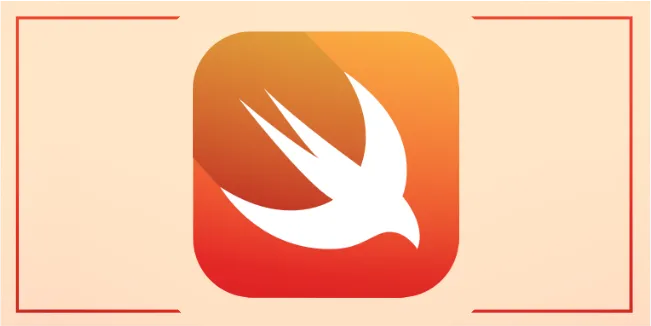
Swift is a powerful and intuitive framework for developing mobile apps for macOS, iOS, watchOS, tvOS, and Linux. Swift is easy to use and open source, so anyone with an idea can create something incredible.
Swift makes it easy to write software that is incredibly fast and safe by design. Swift combines the best in modern language thinking with wisdom from the wider Apple engineering culture and its open-source community contributions. The compiler is optimized for performance, and the framework is optimized for development without compromising on either.
Swift builds on the best of C and Objective-C without the constraints of C compatibility. Swift adopts safe programming patterns and adds modern features to make programming easier, more flexible, and more fun. Read our article “OBJECTIVE-C VS. SWIFT – WHICH ONE TO CHOOSE FOR IOS DEVELOPMENT?” to learn more.
Features of Swift
- Error handling system
- Compatible with Objective C
- Integrated debugged lines and the app’s run-time code
- Automatically managed memory
Companies that took advantage of Swift
- Apple
- Lyft
- Airbnb
- Vimeo
Flutter

Flutter was created by one of the biggest corporations in the world – Google. It is an SDK (Software Development Kit), which comes in with all the necessary elements, components, and libraries to build an amazing cross-platform mobile application.
In addition, Flutter has its own UI components that are not found in other frameworks and are also customizable. The design and development process is faster with Flutter as it comes with ready-to-use widgets.
The Flutter apps are built using Dart programming language – also created by Google. It is easy to learn for anyone that knows Java, JavaScript, or any object-oriented language.
Features of Flutter
- Hot reload
- Widgets
- Skia graphic engine
- Declarative API
Companies that took advantage of Flutter
- Google Ads
- eBay Motors
- Tencent
- KlasterMe
Kotlin
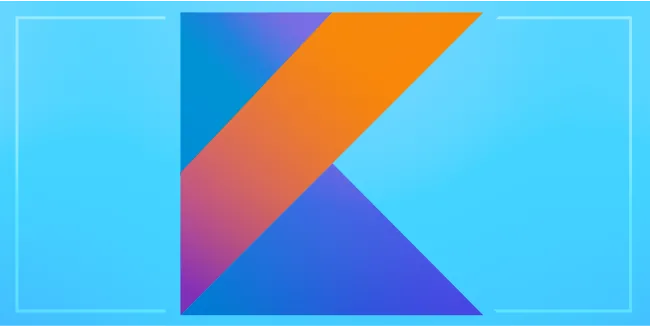
Kotlin is a cross-platform, statically typed, general-purpose programming language with type inference. Kotlin is designed to interoperate fully with Java, and the JVM version of its standard library depends on the Java Class Library, but type inference allows its syntax to be more concise.
Kotlin mainly targets the JVM but also compiles to JavaScript or native code (via LLVM). The compiler has minimal dependencies and can run anywhere, from a Jupyter notebook to a server.
While the syntax is incompatible with Java, Kotlin is designed to interoperate with existing Java code and libraries. In addition to allowing some syntactic sugar, such as extensions, Kotlin also introduces some features not present in Java, such as nullable types and lambdas.
Features of Kotlin
- Clean language design
- Intuitive syntax
- A lot of available libraries
- Easy transition from Java
Companies that took advantage of Kotlin
- Netflix
- Slack
Ionic
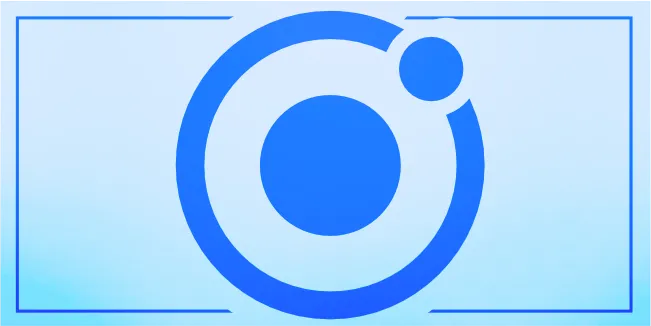
Ionic is a complete open-source SDK for hybrid mobile app development. Ionic provides tools and services for developing hybrid mobile apps using Web technologies like CSS, HTML5, and Sass.
Mobile apps can be built with these Web technologies and then distributed through native app stores to be installed on devices. Because Ionic apps are built with standard web technologies, they can run anywhere you can run a website. This includes both iOS and Android devices.
Ionic is a popular framework among developers because it offers a wide range of features that make mobile app development more efficient. It is also worth mentioning that with Ionic, you can develop progressive web apps.
Features of Ionic
- Command-line interface (CLI)
- UI components
- LiveReload
- Native functionalities
Companies that took advantage of Ionic
- DieselOn
- Untappd
- Cryptochange
- ChefSteps
Apache Cordova

Apache Cordova is a mobile application development framework created by Nitobi. It was acquired by Adobe Systems in 2011 and has since been the framework’s owner and developer.
Cordova provides a set of APIs to access native device functionalities such as cameras, file systems, and networking. It also allows developers to package their apps into Native binaries for each platform.
Apache Cordova is similar to Ionic regarding the type of programming languages used. Apache takes advantage of well know web languages such as HTML5, CSS3, or JavaScript. This architecture, in a nutshell, serves as a vessel for aligning web apps with native mobile capabilities.
Features of Apache Cordova
- Cordova CLI
- Cordova plugins
- Cordova core components
- Usage of web languages
Companies that took advantage of Apache Cordova
- Skype
- Twitter Lite
Xamarin
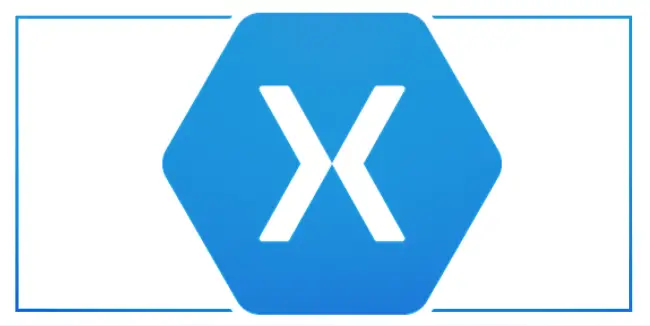
Xamarin, on the other hand, is a bit more closed off regarding language usage. C# and .NET are the only languages that can be used. Despite this apparent limitation, Xamarin still provides access to each platform’s API and SDK.
In other words, developers won’t have to worry about losing any functionality by using Xamarin over another framework. Xamarin also boasts great performance thanks to its use of Ahead-of-Time (AOT) compiling.
Xamarin is a cross-platform framework that allows developers to create Android, iOS, and Windows apps with one shared C# codebase. Unlike Cordova, which simply bridges web code into a platform’s WebView, Xamarin compiles your app into a native binary that runs directly on the device’s CPU.
Features of Xamarin
- Code Sharing Across Platforms
- Native User Interfaces
- Access to each platform’s API and SDK
- Ahead-of-Time (AOT) compiling
Companies that took advantage of Xamarin
- Alaska Airlines
- HCL
- The World Bank
- Fujitsu
JQuery Mobile
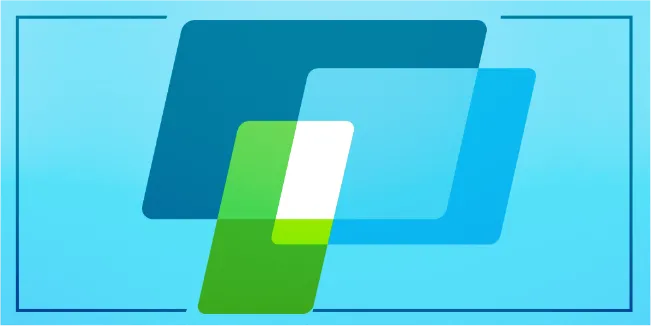
JQuery Mobile is an HTML5-based framework that provides touch events, graceful degradation, and multi-page template support. It also offers cross-platform portability, theme support, and Ajax loading.
JQuery mobile also allows the usage of JavaScript libraries, thanks to which the work of developers is made considerably easier and faster, as JavaScript is one of the most popular programming languages on the market.
The framework is compatible with all major mobile platforms, including iOS, Android, BlackBerry, Windows Phone, and Palm.
Features of JQuery Mobile
- Compatible with all major mobile platforms
- Themeroller-based theme customization
- Ajax-powered navigation system
- Touch and Gesture Events
Companies that took advantage of JQuery Mobile
- Adobe
- IBM
- Intel
- SAP
Swiftic

Swiftic is a no-code mobile app development framework. It is popular among small businesses and startups as it offers an easy way to develop and launch a mobile app with no coding required.
Swiftic also offers many templates and themes to choose from, so you can easily create an app that fits your brand.
Of course, its functionalities are significantly limited, but if you need to develop a very simple app, Swiftic should do the job.
Features of Swiftic
- No-code development
- Push notifications
- In-app messaging
- Loyalty programs
Companies that took advantage of Swiftic
- Fleurty Ginger Boutique
- Mount Royal Bagel Company
- Clubhouse
- Spa Café
NativeScript
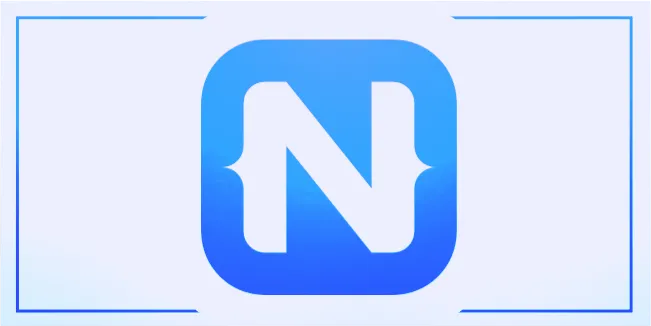
NativeScript is an open-source framework for cross-platform development. It allows developers to use JavaScript to build native apps for both iOS and Android.
With NativeScript, you can access all the features of the native platform, such as the file system, camera, and geolocation. This makes it a good choice if you need to develop a more complex app than in the case of Swiftic.
However, it does require some coding knowledge, so if you’re not a mobile app developer, you’ll need to hire one.
Features of NativeScript
- Cross-platform development
- Access to native platform features
- Native user-interface
- AndroidX support
Companies that took advantage of NativeScript
- Accenture
- NticeMe
- Yape
- Daily Nanny
Conclusion
There are many mobile app frameworks available, each with its own pros and cons. In this article, we’ve looked at some of the most popular ones. We hope that the insights collected in this article will help you make the right decision!
